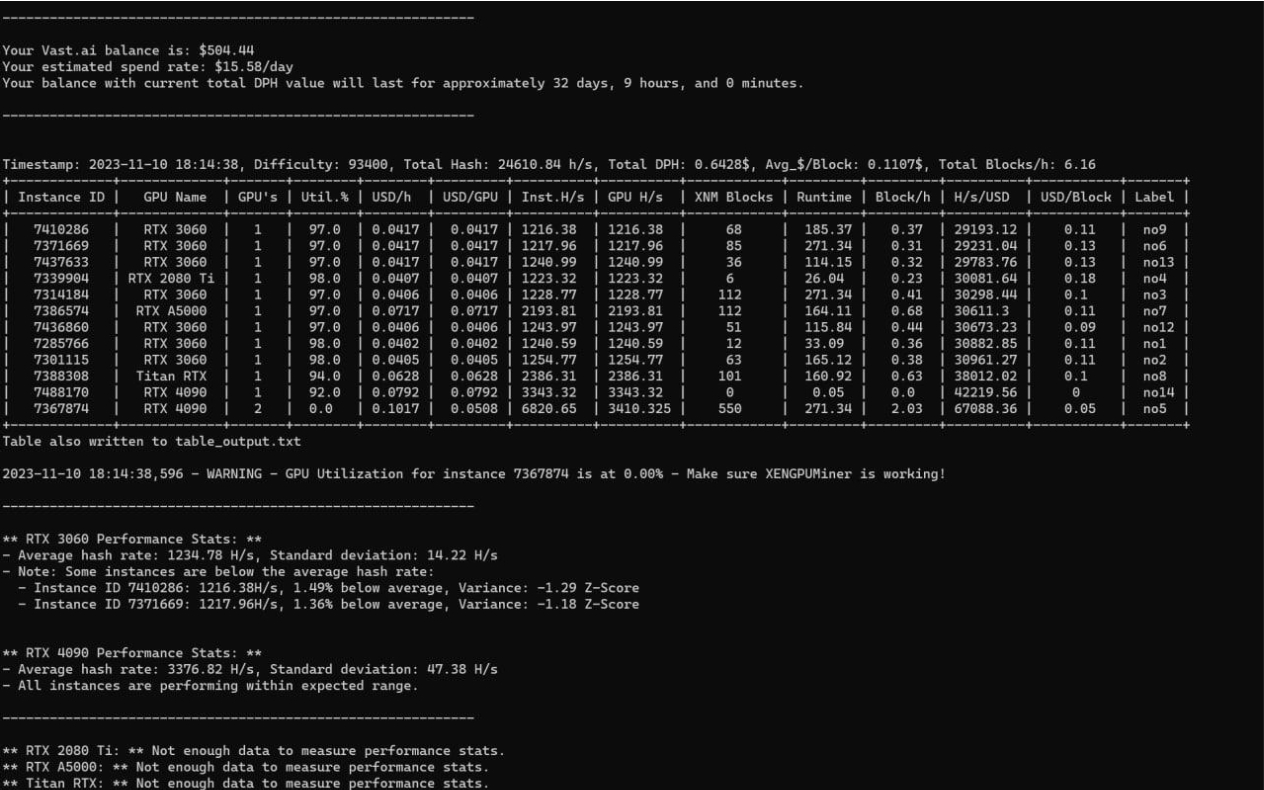Mining XNM with XenBlocks
Mining process
XNM serves as the incentive token awarded for participating in the Proof of Work (PoW) mining process.
Hashing operations demand hardware with significant computational capabilities, such as GPUs. Miners have the option to purchase GPUs, which are well-suited for the memory-intensive cryptographic hashing algorithm Argon2, allowing for efficient mining even with mid-range GPUs. Alternatively, individuals can opt to rent GPUs at affordable rates—often just a few cents per hour—through platforms like vast.ai that facilitate access to shared GPU resources.

To begin mining, users simply need to deploy the mining script and monitor its efficiency over time. An important metric for assessing mining efficiency is h/s/usd, which measures the number of hashes generated per second relative to the cost incurred. Upon successfully solving a hash and discovering a block, the X1 network confirms its validity and rewards the miner with XNM for each block found.
Various community made tools have been made to help optimize the mining of XenBlocks. Here tr4vler made performance bot which plugs into your GPUs and monitor their performance over time.

Last updated
